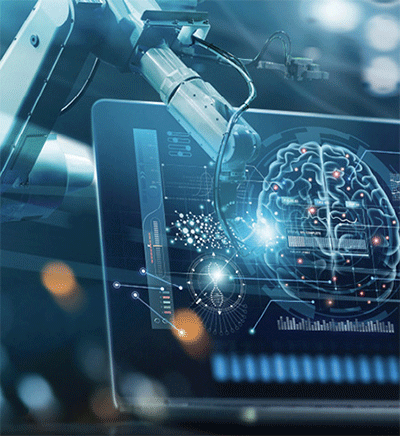Machine Learning Tool Harmonizes MRI Data in Patients With Alzheimer's Disease
Evaluation metrics remove scanner-related variations in brain volumes while preserving disease-related signals


A machine learning tool outperformed other available strategies for harmonizing brain volumetric data from different MRI scanners while preserving Alzheimer’s disease detection in a clinical setting, according to a study in Radiology: Artificial Intelligence.
Structural MRI scans with quantitative imaging markers such as brain volume are useful for diagnosing Alzheimer’s disease and differentiating it from other types of dementia. However, differences in MRI scanners and acquisition protocols affect the consistency and reproducibility of brain volumetry and are a major impediment for the clinical translation of automated tools.
Many tools that harmonize MRI data to reduce or eliminate differences in image appearance from different scanners or acquisition protocols have emerged in recent years. Research has shown that these algorithms can harmonize patient data affected by a neurodegenerative disease while preserving disease-related signature.
“Data derived from brain magnetic resonance imaging are often influenced by the scanner and the settings used for the MRI acquisition, and this may pose serious methodological issues, especially in retrospective multicenter imaging initiatives where there is no possibility to define a standard MRI acquisition protocol,” said Damiano Archetti, MSc, from the Laboratory of Neuroinformatics, IRCCS Istituto Centro San Giovanni di Dio Fatebenefratelli in Brescia, Italy.
Dr. Archetti co-lead the study with Vikram Venkatrahavan, PhD, of the Alzheimer Center Amsterdam at Vrije Universiteit, Amsterdam University Medical Centers.
“Harmonization is a class of models that aim to solve this problem by quantifying the contribution of the acquisition protocol on the variability of the data and removing it so that what is left is an unbiased biomarker,” Dr. Archetti said.

New ML Model Harmonized Brain Volumetric Data
A popular, recently developed machine learning tool called Neuroharmony uses image quality metrics as predictors to remove scanner-related effects in brain volumetric data. Archetti and colleagues developed a multiclass version of this model that incorporates data from individuals with and without cognitive impairment. The model accounts for the interactions between Alzheimer’s disease pathology and image quality metrics during harmonization.
To evaluate performance, the researchers applied the multiclass Neuroharmony model to a large, diverse dataset of 20,864 participants across 11 cohorts, 43 MRI scanners and three continents. The model was tested against other harmonization strategies—specifically, a normative model trained only on individuals without cognitive impairment and an inclusive model that included individuals both with and without cognitive impairment.
The multiclass Neuroharmony model outperformed both experimental approaches, particularly for data from unseen scanners, and showed superior ability to retain biologically meaningful differences between diagnostic groups.
“The novelty of our approach was to use the information about cognitive status as a covariate for the model, so that the influence of the pathology on the variability of the data can be preserved,” Archetti said. “This approach surpassed other models in terms of achieving concordance across scanners while preserving biological differences between the healthy population and the pathological group.”

Harmonization Needs Improvement To Work Across Different MRI Scanners And Different Diseases
The algorithm has considerable promise in addressing the significant problem of variability between MR scanners, according to Sven Haller, MD, MSc, a neuroradiologist and the medical director at Centre d’Imagerie Médicale Cornavin (CIMC) in Geneva, Switzerland, and visiting professor at the University of Uppsala, Sweden, and at the Tiantan Hospital in Beijing. In an editorial accompanying the study, Dr. Haller noted that it is very common for patients to have baseline and follow-up images on different MR scanners for various reasons such as different imaging facilities and upgrades of MR systems over time.
“When there are subtle changes such as subtle atrophy at early stages of neurodegenerative diseases like dementia, the question invariably arises of whether such changes are real or biased due to scanner differences,” he said. “If those scanner differences could be removed by a harmonization tool, that would be very helpful.”
The holy grail of image harmonization, Dr. Haller said, is a tool that would remove only scanner-related variability while completely preserving disease-related variability. Tools that remove disease-related variability could do more harm than good, he added.
“While this potential pitfall is very obvious, it is very challenging and complex to measure and avoid,” he commented. “There is certainly no simple solution.”
“Completely disentangling the scanner-related variability from the disease-related variability is challenging to say the least, and state of the art methods cannot provide it,” Archetti added. “The novelty of our study was that disease-related variability was preserved better than other approaches, but of course there is a lot of room for improvement to this end.”
Although the study focused on the Alzheimer’s disease spectrum, the researchers expect that the new method will be valuable for impaired cognition in general. They also expect the approach to be applicable for patients with psychiatric disorders, but further work would be needed for patients with other neurological conditions, especially those in which the brain is affected by large lesions and other major structural modifications.
“A topical experiment would be to test the generalizability of the model to other forms of dementia or to other neurological diseases and fine-tune the model for specific cases,” Archetti said. “If the possibility and need of such improvements comes up, we will surely undertake this challenge.”
For More Information
Access the Radiology: Artificial Intelligence study, “A Machine Learning Model to Harmonize Volumetric Brain MRI Data for Quantitative Neuroradiologic Assessment of Alzheimer Disease,” and the related commentary, “Machine Learning to Harmonize Interscanner Variability of Brain MRI Volumetry: Why and How.”
Read previous RSNA News stories about brain imaging: